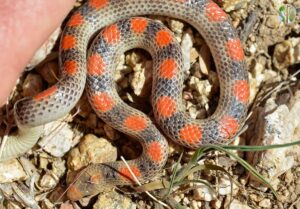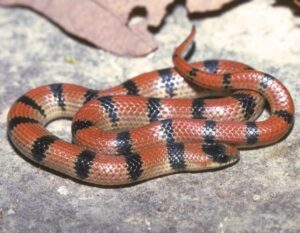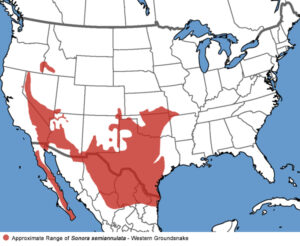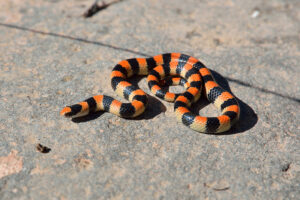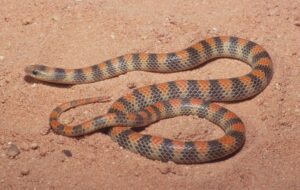The western ground snake is a small, nocturnal, and secretive colubrid native to North America. Other common names of the species are the common ground snake, and variable ground snake, as its color and pattern can vary greatly even in the same geographic location. It is also known as the miter snake, referring to its head marking that resembles a bishop’s miter.
Scientific Classifications
- Suborder:Serpentes
- Family:Colubridae
- Genus: Sonora
- Species:S. semiannulata
Conservation Status
Description
Size
The variable ground snake can attain a total length of 8-19 in (20.3-48.3 cm), including its tail.
Color and Appearance
The western ground snake can be red, brown, or orange with brown or orange striping or black banding. Individuals can also be solid-colored. The ventral side is typically gray or white. The head is small, the pupils are round, and the dorsal scales are smooth.
Are They Dangerous to Humans
The serpent is shy, non-aggressive, and harmless to humans. They try to escape if they see a human approaching. However, surprising it in the daytime, when it prefers hiding, can lead to a bite. But it is not painful, thanks to its small size.
Western Ground Snakes at a Glance
Distribution
It can be found in the southwestern US in Nevada, Arizona, California, Kansas, Colorado, Missouri, Oklahoma, New Mexico, Oregon, Utah, and Texas. It also lives in northern Mexico, in Coahuila, Chihuahua, Durango, Sonora, and Nuevo León.
Habitat
The colubrid prefers dry, rocky areas having loose soil that can be burrowed into. It is commonly spotted on roadsides or in dry drainage ditches at night when it forages for food.
Lifespan
It lives for around 15-20 years.
Predators
Due to its small size, it is preyed upon by larger snakes, including the sidewinder.
Diet
Its main food is invertebrates like scorpions, spiders, centipedes, insect larvae, and crickets.
Reproduction
Oviparous (lays eggs that hatch outside the body)
It breeds in spring and lays eggs in the summer months. A clutch consists of 1-6 eggs. The hatchlings resemble the adults in their color and patterns.
Source
wildsonora.com, mdc.mo.gov, californiaherps.com, tumblr.com, kingsnake.com

